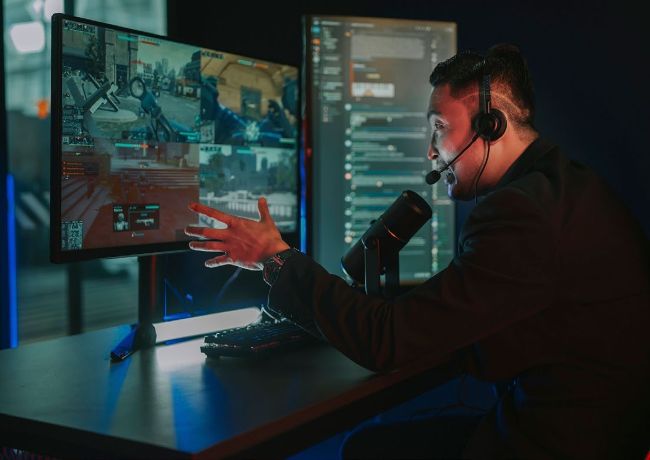WELCOME TO STREAMING SCHOOL
How to get started streaming on Twitch and what hardware you need for it

© GETTY IMAGES
UNLESS YOU’VE BEEN HIDING under a rock for the last decade, you’ll be aware of Twitch. Complete with an arsenal of influencers, journalists, athletes, astronauts, and more, all of them vying for your time, money, and interactions, and hopefully entertaining you in the process.
It’s an incredibly dynamic platform, radically different from any other form of entertainment, and has some of the most passionate communities out there, all centered around personalities and talent from all walks of life.
Into World of Warcraft? Watch the race to World First. Big into Counter-Strike 2? Watch the best players across the planet duke it out. Looking for a Dark Souls challenge run guy? You can see that too. Want to watch a native Kiwi Maori carve up some beautiful pieces of wood? They’ve got that. There are a lot of humans doing a lot of cool stuff, and you can bet your bottom dollar that they’re on Twitch, too.
But what if you want to give it a shot? Maybe you’ve got a passion project you want to share with the world, are keen to stream some gameplay with your buddies, or are just curious if it’s something you could take forward into a full-blown career. Where do you begin? Well, don’t worry, as we’ve got your back. We’ve worked closely with expert Twitch streamers and content creators the world over, to come up with a guide on how to get started in the world of Twitch. We’ll cover everything from hardware considerations to stream overlay and setup, along with a plethora of tips and tricks to get you set on the path to Twitch fame and glory.
HARDWARE REQUIREMENTS
WHEN TWITCH FIRST BLOSSOMED onto the world stage, gaming PCs were in a very different place. Screen recording required some serious hardware to pull off, and programs like Fraps ate up frame rates and system resources incredibly quickly. In fact, it was very common for dedicated Twitch streamers to run not one, but two separate systems: one for the heav y-lifting video encoding and uploading (acting primarily as a passthrough system), and the other for the actual game they wanted to, you know, play. Crazy, right?
For many, the barriers to entry were just too great. Fortunately, a lot has changed since those early days, and with GPUs and CPUs now coming with dedicated streaming and video encoding componentr y embedded directly, the actual system requirements to get going are starting to become fairly average. Take Twitch’s own Studio recommended specs listed here—that’s a GPU almost as old as this journalist’s career, at this point.
That aside, Twitch does point out that a lot of the system requirements come from what video encoder you decide to use as standard for your stream. OBS takes that one step further, providing a list of encoders to be used in order, depending on what you’re doing, and how greatly it impacts performance.
The TL;DR is effectively to run the highest possible encoder for local recording (if you’re planning on just uploading the content to YouTube, TikTok, or wherever after the fact), with high-bitrate top-quality audio. OBS ranks the encoders from best to ‘worse’, AV1—HEVC—H.264. ‘Worse’ is a highly subjective term there, as H.264 will be your go-to for live streaming.